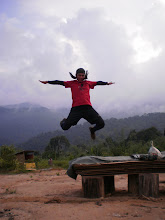The Most Incredible Earth Scars
Posted by Simplelife | Posted in Info | Posted on 5:33 PM

Another open pit whose name leaves little to the imagination, the Big Hole in Kimberly, South Africa, is said to be the largest hole excavated by hand – despite recent claims that the nearby Jagersfontein Mine holds the some might say dubious title. While it was closed in 1914, during its 43-year lifetime, the 50,000 workers who broke their backs using picks and shovels shifted 22.5 million tonnes of earth, yielding almost 3 tonnes of diamonds for their jolly bosses, the de Beer brothers.

With explosions and massive machines scraping into the earth’s crust like a bad case of scabies, it’s small wonder open cast mining has made what many see as an unpleasant impact on the planet’s surface. The face of the earth is beleaguered with giant scars, scoured out in our ongoing bid to the plunder the planet of its natural resources. We’ve selected 10 of the holes most needing a bit of environmental ointment – where rehabilitation of the land could take some time.

Connected by a treacherous ice road, this remote mine takes some getting to and so even has its own airport big enough to accommodate Boeing 747s. With a lifespan of 16 to 22 years, the owners will be happy as long as this yawning hole continues to throw up 8 million carats (1600 kg) of diamonds a year.

Siberia’s Mir Diamond Mine comes close to taking the cake as numero holie. The largest open diamond mine in the world, this Russian monster has a surface diameter of 1.2 km and is 525 m deep. The size of the hole is such that wind currents inside cause a downdraft that has resulted in helicopters being sucked in and crashing. Good to know the area above it is now a no-fly zone.

The Big Hole is 463 metres wide and was dug to a depth of 240 m – though infilling and water-accumulation have left just 175 m of the hole visible. It’s now a show mine complete with a restored old town. Quaint.

So here it is, the carbuncle supremo, Bingham Canyon Mine in Utah, the world’s biggest manmade pit. This mammoth mine measures 4 km wide and drops a stomach-churning 1.2 km into the ground, the result of extraction begun in 1863. The ore-inspiring fruits of its labour include more than 17 million tonnes of copper and 715 tonnes of gold – a mental load of metal.

After its discovery in 1955, workers at the Mir had to endure incredibly harsh temperatures that froze the ground and everything else in the winter, making car tires and steel shatter. The mine ceased operations in 2001, having produced 10 million carats (2 tonnes) of diamond per year at its peak. Our survey says: ka-bling.

Diavik Diamond Mine is located in Canada’s charmingly named North Slave Region – hopefully no reflection on the way the 700 workers here are treated. This is an open cast mine like no other. Gouged into a 20 square km island, 220 km from the Arctic Circle, there are particularly jaw-dropping views of this cold spot when the surrounding waters freeze over.


Copper has been mined for centuries at Chuquicamata, as shown by the 1898 discovery of a mummy dated around 550 AD found trapped in an ancient mine shaft by a cave-in. A great influx of miners was sucked in by ‘Red Gold Fever’ after the War of the Pacific, when at one stage the area was covered with unruly mining camps where alcohol, gambling, prostitution and even murder were rife. Yee-haw.
The nearby settlement of Udachny was named after the diamond deposit, which was discovered in 1955 just days after the Mir (below). The Udachnaya pipe is controlled by Alrosa, Russia’s largest diamond company, which boasts that it plans to halt open-pit mining in favour of underground mining in 2010. Glad to hear it.
- Outside source -